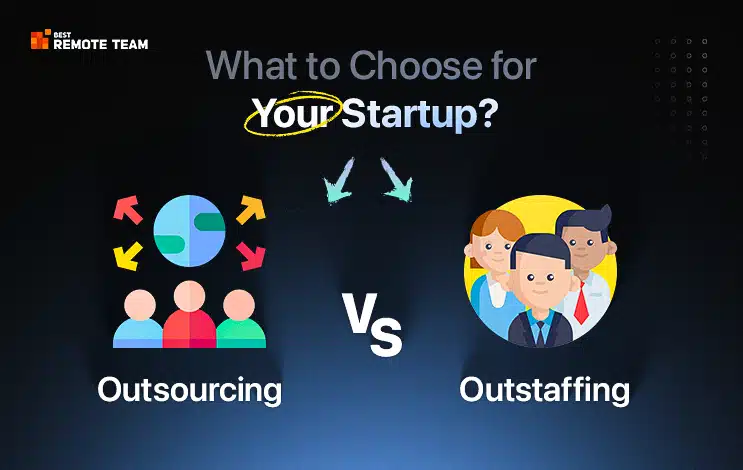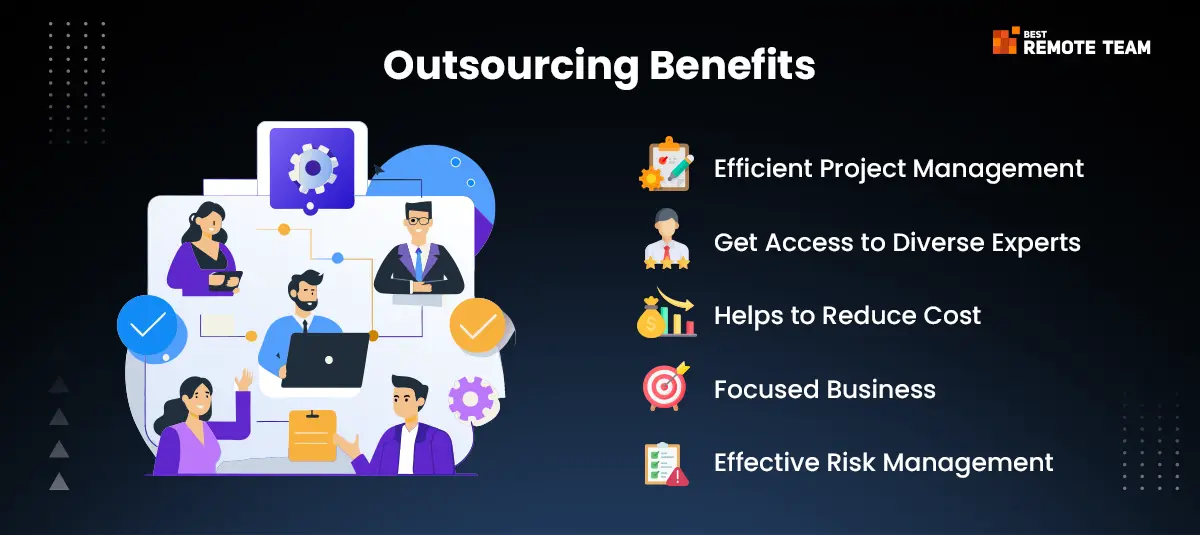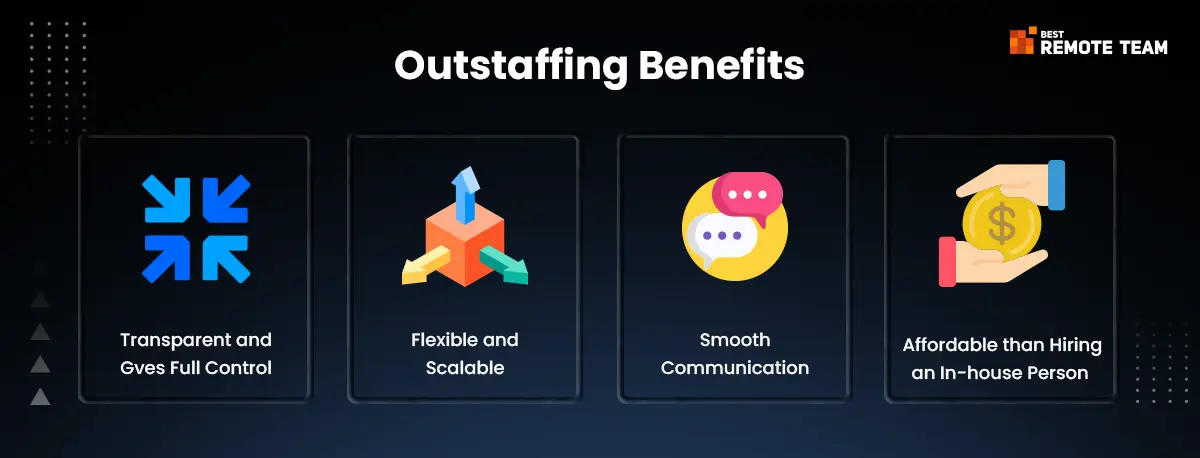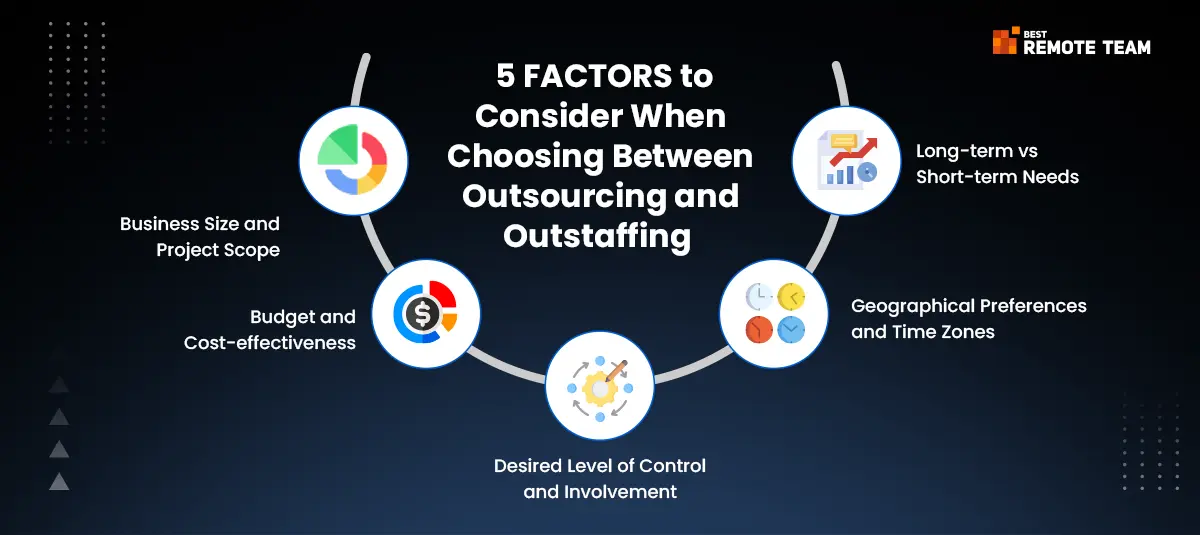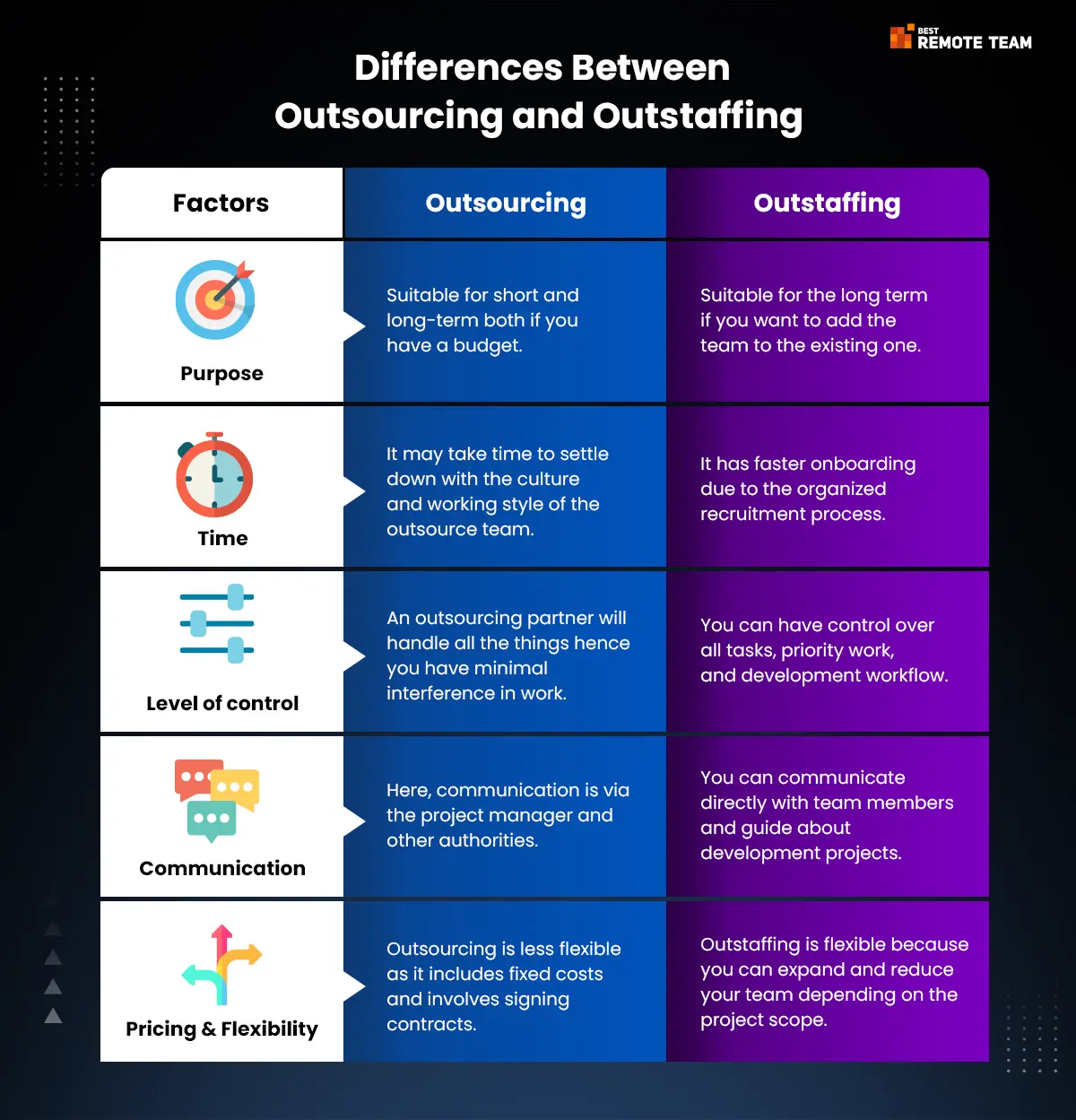What is Outsourcing?
Outsourcing is a process where an organization hires another company or third party for a specific project or task. This can be long-term or short-term depending upon the requirements.
Nowadays, outsourcing is almost used in every industry such as manufacturing, HR, research, and many more. In simple words, a business wants to focus on internal work by handing over other time-consuming work to an interested third party. Eventually, it’s a win-win situation for both parties because it’s cost-saving and flexible.
Advantages of Outsourcing
1. Efficient Project Management
Partnering with a reputed and reliable outsourcing company can be lucky for your business because they know how to handle hectic chores. also, you can be stress-free and relaxed because there is no doubt when you have assigned a project to an experienced outsourcing partner.
2. Get Access to Diverse Experts
Outsourcing is really a bigger industry in today’s time than you think. Whether it’s technical or non-technical business, there are a diverse range of outsourcing professionals available at affordable rates, that can make things easier for you.
To find the right one, you can simply google and you will find a diverse range of talented professionals at your fingertips.
3. Helps to Reduce Cost
Outsourcing obviously helps to save costs, it might not be a big amount, but it definitely saves money because you don’t need to pay for employees like monthly salaries, infrastructure fees, and other organization perks are also excluded. Even you don’t have to pay for wifi and other resources so if we see the big picture, this ultimately adds towards the business profit.
4. Focused Business
Delloite survey says that 65% of organizations were able to focus on their core business activities due to outsourcing. It’s because you don’t have unnecessary stress of work or distractions in the middle of work. Outsourcing can help your business to amazing heights if used smartly with the proper division of work.
5. Effective Risk Management
If you have any business-specific needs like handling IT services, data management, or cybersecurity, hiring a reputed outsourcing partner who can handle hectic operations is the best option. This way, you will have a clear mind and you can operate fear-free among other core operations.
Disadvantages of Outsourcing
Everything comes with benefits and some drawbacks, it’s on you, and how you handle it. Below are some of the drawbacks you might experience during outsourcing:
1. Quality Issues
There can be sometimes quality issues in the work as an outsourcing person may sometimes get lazy or take your project lightly, resulting in not-up-to-the-mark quality.
2. Communication Challenges
There can be chances of communication issues if your outsourcing partner is out of the country or in another region. This gets more serious when you want to solve some urgent issue and need quick communication.
Outsourcing Development Rates by Country
| Country | Average Cost Rates by Hours |
| United States | $75-150/hour* |
| Germany | $70-140/hour* |
| Ukraine | $25-50/hour* |
| Poland | $35-70/hour* |
| India | $15-30/hour* |
What is Outstaffing?
Outstaffing can be called external employment or remote employment. It refers to a hiring model where you hire developers on a contract basis for a project or a specific period of time. It can be in-house and you pay him/her salary like an employee but it’s not permanent.
Outstaffing can also be onshore, offshore, or nearshore.
Quick read: Offshore vs Onshore Teams: Cost Differences
Advantages of Outstaffing
1. Transparent and Gves Full Control
You can have full control over the development process and project integrations because you will closely work with outstanding employees. This transparent working environment builds trust and a positive work environment.
2. Flexible and Scalable
Imagine you have an immediate project requirement that needs to be done within a tight deadline. But if you have hired out staffing partner, you can easily scale the employee size depending on the project requirements.
3. Smooth Communication
There is smooth communication between the client team and team members which is important to avoid misunderstandings and complete the project efficiently.
4. Affordable than Hiring an In-house Person
Outstaffing is for you if you are not currently looking for a full-time in-house person. One survey has found that you can save up to 40% of your business cost because you don’t have to invest your time and money on onboarding, recruiting, training, and other infrastructure fees or organization benefits.
Disadvantages of Outstaffing
1. Comes with Responsibility
It comes with many responsibilities because you are responsible for handling remote and in-house teams and ensuring proper coordination throughout the project.
2. Dependent on Third-party Providers
Outstaffing relies on third-party vendors hence you are dependent on clients for updates and other things. This could cause a lack of communication and cause problems in project quality and delays in delivering the project.
Key Factors to Consider When Choosing Between Outsourcing and Outstaffing
So, before directly jumping into outsourcing or outstaffing, you should consider some of the important factors to get the worthy benefits of it. Below are some, let’s go through it.
1. Business Size and Project Scope
You must go through a detailed evaluation of your business to know the accurate size and projects that are expanding. If you are a small business and have limited resources or employees, you will benefit from outsourcing.
If you have more development needs, outstaffing can be a reliable choice.
2. Budget and Cost-effectiveness
Know the budgets of your company and project priority to understand whether you should invest in outstaffing and IT outsourcing services. You must accept that outsourcing will be expensive because it can be either a fixed cost or depending upon your project needs.
3. Desired Level of Control and Involvement
You must analyze how much involvement from your side is needed while working on the project. If you have that kind of project that can be easily completed by external teams with less involvement and control, outsourcing is a good choice.
If you have a project that needs timely collaboration, discussion, and involvement in the project, outstaffing is the choice.
4. Long-term vs Short-term Needs
This is one of the crucial factors. Consider whether you are seeking long-term or short-term development services. As we discussed above, it must be clear to you that outsourcing suits short-term needs and outstaffing for long-term needs.
5. Geographical Preferences and Time Zones
Also, geographical location is one of the important things to check because your work fluency and performance will rely on this. To have easy communication, culture compatibility, and get the project done seamlessly, consider timezone, and location.
When to Choose Outsourcing?
You must choose outsourcing and outstaffing wisely. Read the below scenarios to know when outsourcing is suitable and when outstaffing.
You must choose to outsource:
- When you need any expertise or have any specific project requirements which is not available in-house
- If you are a big company that does not have time to handle non-core tasks
- If you have budget constraints or want to have strict budget planning
- When you are dealing with short-term projects
- When you want scalable products and a faster time-to-market
- If you don’t want to spend on full-stack development or full-stack developer salary
When to Choose Outstaffing?
You must choose to outstaffing:
- If you have complex and technical requirements
- If your project needs dedicated resources and proper team collaboration
- If you are looking for comprehensive control and track throughout the development
- If you are dealing with a long-term project that needs continuous engagement and sync, hiring outstaff developers will be perfect for you
- If you want to stay away from hiring and recruiting kinds of stuff
Outsourcing vs Outstaffing: Which is Better?
Both have their pros and cons and both are suitable for different needs. Outsourcing is a better option if you have a short-term project and have a fixed budget. Also consider, that you will have to accept that the outsourcing provider should be able to handle the tasks with minimal involvement.
The out-staffing model is a suitable pick for you when you are expecting a long-term engagement with a business and want direct communication with them.
In the end, the choice is completely yours. We recommend you consider your ongoing requirements such as the problems you are facing currently in development. Consider your in-house expertise, budget, and other factors to weigh down and select the suitable option from outsourcing and outstaffing.
How Can Best Remote Teams Help You With Outsourcing And Outstaffing Services?
Best Remote Teams can be your one-stop solution for all kinds of outsourcing and outstaffing project needs. For decades, we have been assisting various businesses and our reputed clients with outsourcing solutions. Whether you need help with outsourcing app development or web development, we have a skilled team of dedicated professionals as well as a remote software development team that provides unmatched quality and experience. Our team of skilled developers are selected by an AI-vetted process to ensure work quality and professionalism in work.
Why don’t you give a us shot? If you are a busy business that needs outsourcing or outstaffing service, we are just one email or call away.
Conclusion
Running an organization with plenty of employees is not easy, whether it’s small or big. Choosing the right talent strategy is the base for running a business smoothly with good performance and efficient budget planning. This is only possible by choosing the right outsourcing or outstaffing partner.
Know your business pain points, location, budget, employee skills, and other factors before deciding on a suitable strategy for your business.
Has our blog made you clear about Outsourcing vs Outstaffing?


